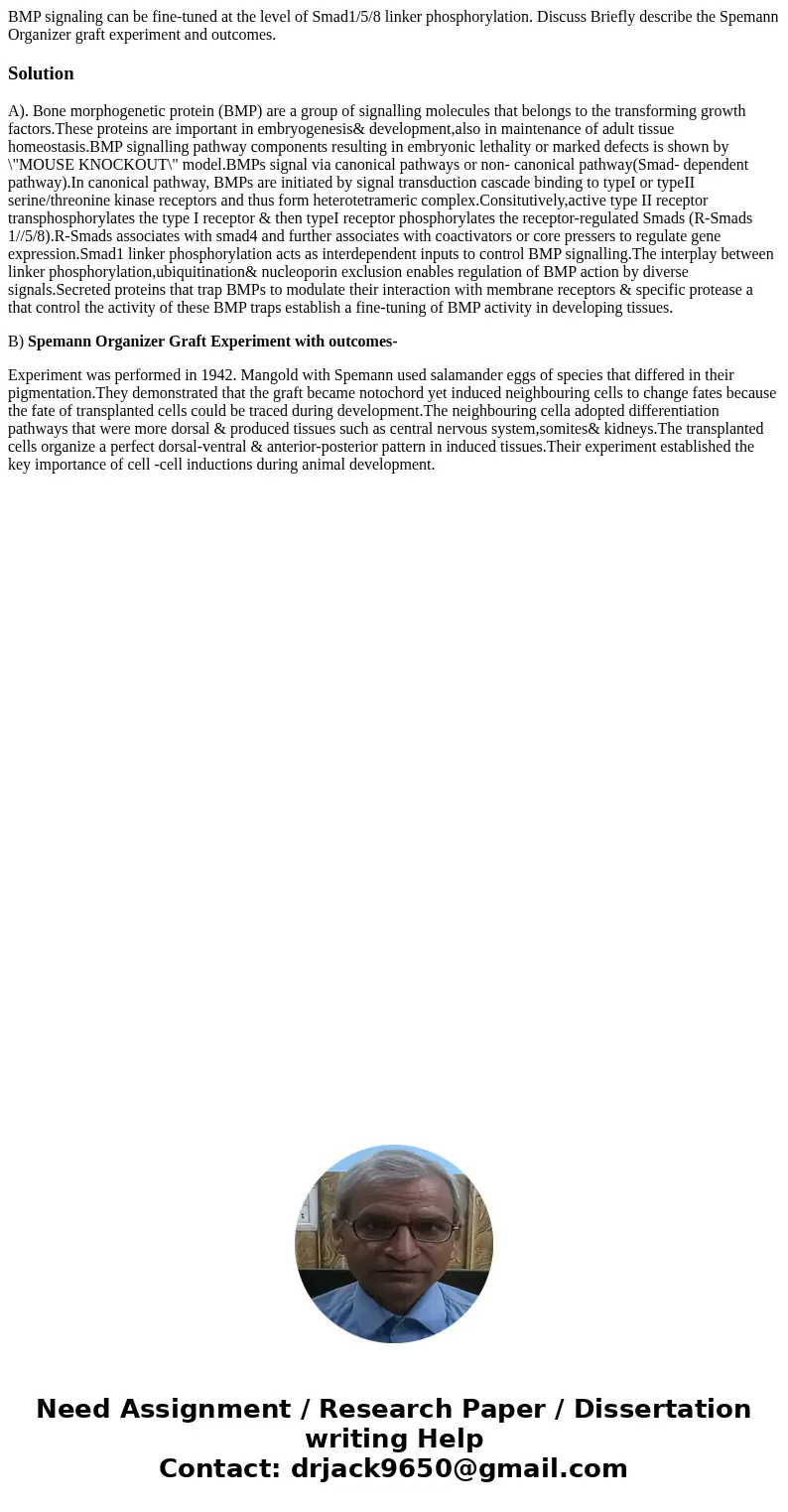BMP signaling can be finetuned at the level of Smad158 linke
Solution
A). Bone morphogenetic protein (BMP) are a group of signalling molecules that belongs to the transforming growth factors.These proteins are important in embryogenesis& development,also in maintenance of adult tissue homeostasis.BMP signalling pathway components resulting in embryonic lethality or marked defects is shown by \"MOUSE KNOCKOUT\" model.BMPs signal via canonical pathways or non- canonical pathway(Smad- dependent pathway).In canonical pathway, BMPs are initiated by signal transduction cascade binding to typeI or typeII serine/threonine kinase receptors and thus form heterotetrameric complex.Consitutively,active type II receptor transphosphorylates the type I receptor & then typeI receptor phosphorylates the receptor-regulated Smads (R-Smads 1//5/8).R-Smads associates with smad4 and further associates with coactivators or core pressers to regulate gene expression.Smad1 linker phosphorylation acts as interdependent inputs to control BMP signalling.The interplay between linker phosphorylation,ubiquitination& nucleoporin exclusion enables regulation of BMP action by diverse signals.Secreted proteins that trap BMPs to modulate their interaction with membrane receptors & specific protease a that control the activity of these BMP traps establish a fine-tuning of BMP activity in developing tissues.
B) Spemann Organizer Graft Experiment with outcomes-
Experiment was performed in 1942. Mangold with Spemann used salamander eggs of species that differed in their pigmentation.They demonstrated that the graft became notochord yet induced neighbouring cells to change fates because the fate of transplanted cells could be traced during development.The neighbouring cella adopted differentiation pathways that were more dorsal & produced tissues such as central nervous system,somites& kidneys.The transplanted cells organize a perfect dorsal-ventral & anterior-posterior pattern in induced tissues.Their experiment established the key importance of cell -cell inductions during animal development.

 Homework Sourse
Homework Sourse